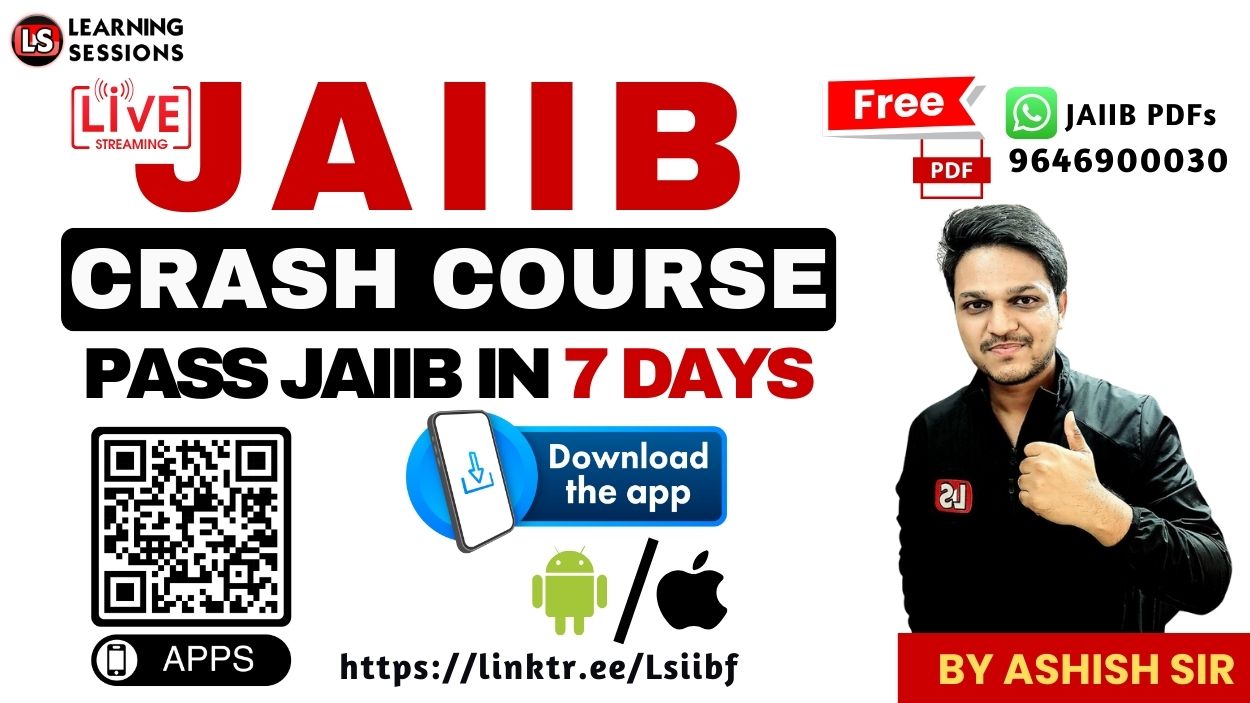Ever sat with your JAIIB or CAIIB textbook and felt completely lost after reading a single paragraph? You’re not alone. Most banking professionals preparing for IIBF exams face this exact challenge — understanding concepts theoretically but failing to connect them with real-life banking operations.
📚 JAIIB Study Resources 📚
👉 Check Here
👉 Check Here
👉 Check Here
👉 Get Tests Here
👉 Check Here
📚 CAIIB Study Resources 📚
👉 Check Here
👉 Check Here
👉 Check Here
👉 Get Tests Here
👉 Check Here
👉 Click Here
👉 Click Here
👉 Watch Full Video
1. Building the Foundation — Understanding the Banking System
Before diving into topics like credit appraisal or risk management, it’s essential to understand the structure and purpose of the banking system. Banks aren’t just intermediaries that lend money; they are the foundation of a nation’s economy.
They collect deposits from individuals and institutions, channel these funds into productive sectors, and ensure liquidity in the economy. RBI plays a pivotal role here, regulating monetary supply, supervising institutions, and ensuring systemic stability.
💡 Did you know? The Reserve Bank of India (RBI) was established in 1935 under the RBI Act, primarily to regulate the issue of banknotes and maintain monetary stability in India.
- 🏦 Types of Banks: Scheduled, Non-scheduled, Cooperative, RRBs, and Small Finance Banks.
- 💰 Core Banking Concept: CBS (Core Banking Solution) allows real-time banking across branches.
- 📊 Banking Channels: Traditional branches, ATMs, Internet Banking, Mobile Banking, and DBUs (Digital Banking Units).
2. Risk Management — The Heart of Banking Operations
Risk is an inseparable part of banking. Every time a bank lends money, invests in securities, or processes a transaction, it assumes a level of risk. Effective risk management ensures that banks remain profitable, stable, and compliant with RBI norms.
Types of Risks in Banking:
- Credit Risk: The possibility that a borrower fails to repay the loan. Managed via credit appraisal, scoring, and collateral.
- Market Risk: Losses due to changes in market variables like interest rates, currency rates, or equity prices.
- Operational Risk: Arises from failed processes, people, systems, or external events — for example, fraud or cyberattack.
- Liquidity Risk: When a bank can’t convert assets to cash without incurring losses.
Under the Basel III framework, banks are required to maintain adequate capital to cover these risks, ensuring long-term stability. Tools like RAROC (Risk-Adjusted Return on Capital) and VaR (Value at Risk) are commonly used to measure and control exposure.
3. Credit Appraisal — Evaluating Borrowers Like a Pro
When a borrower applies for a loan, banks follow a detailed credit appraisal process before sanctioning the request. This ensures funds are lent to genuine, capable borrowers and minimizes default probability.
Key Steps in Credit Appraisal:
- 📋 Loan Application Scrutiny: Checking the borrower’s profile, purpose, and repayment capacity.
- 📄 Documentation: Includes KYC, financial statements, ITRs, collateral papers, and project reports.
- 📈 Financial Analysis: Ratio analysis like DSCR, Current Ratio, and Debt-Equity Ratio.
- 🏠 Valuation & Legal Verification: Ensuring property or security is valid and marketable.
Example: A DSCR (Debt Service Coverage Ratio) of 1.5 means the borrower earns 1.5 times the amount needed to service loan repayments — indicating healthy repayment capacity.
4. Foreign Exchange — Understanding the Global Money Flow
Foreign Exchange (Forex) refers to the global marketplace for exchanging one currency for another. In banking, foreign exchange transactions are regulated by FEMA 1999 and supervised by RBI.
India follows a managed floating exchange rate system, where the rupee’s value is market-driven but occasionally adjusted by RBI interventions to maintain stability.
- 💱 Major Forex Instruments: Spot, Forward, Swap, Options, and Futures.
- 🏦 Authorized Dealer (AD) Banks: Banks authorized by RBI to handle forex transactions (AD Category I, II, III).
- 🌍 NRI Accounts: NRE, NRO, FCNR — each with specific rules on repatriation and tax treatment.
For exam aspirants, understanding how exchange rate arithmetic works — including bid/offer rates, cross rates, and forward margins — is essential. The video explains these with examples like:
“If USD/INR = 83.20/83.25, what does it mean for an importer or exporter?”
Atal Pension Yojana Explained – Full Details, Benefits, Eligibility & Death Rules
5. Working Capital Management — Lifeline of Businesses
Working capital is the capital needed for day-to-day business operations. Banks assess this requirement through methods suggested by Tandon Committee and Nayak Committee.
- 📊 Current Assets – Current Liabilities = Working Capital
- 🏭 Tandon’s Method: Introduced 3 lending norms (1st, 2nd, and 3rd Method) for MPBF calculation.
- 📋 Nayak Committee: Applicable for small units; requires 25% of projected annual turnover as working capital.
The article also highlights Drawing Power (DP) — the limit up to which a borrower can draw funds based on stock statements and book debts.
💡 Tip: Always remember — inadequate working capital can halt production, while excessive working capital reduces profitability.
6. Expert Exam Strategy — How to Ace JAIIB & CAIIB
Clearing professional banking exams isn’t just about hard work — it’s about smart work. Here’s how to use these concepts strategically to maximize your marks.
- 📘 Concept First, MCQ Later: Understand logic before solving questions. Don’t memorize blindly.
- 🎯 Focus on Weightage: Prioritize Basel III, Risk Management, Ratio Analysis, and RBI updates.
- 🕒 Revision Strategy: Revise every 3 days using mind maps and chapter summaries.
- 💬 Watch Bilingual Videos: Hindi-English mix improves retention and recall during exams.
The instructor also shares insights on handling tricky questions, common mistakes in numerical topics, and ways to approach scenario-based MCQs. Regular practice and conceptual clarity remain the ultimate game changers.
Conclusion
Banking exams like JAIIB, CAIIB, and IIBF Certifications are not just about passing tests — they’re about upgrading your professional understanding. Every topic you master strengthens your foundation as a banker and opens doors to promotions, recognition, and confidence.
By learning with practical examples, RBI guidelines, and conceptual clarity, you not only score better but also perform better at work. That’s the real goal — learning that transforms your professional journey.







